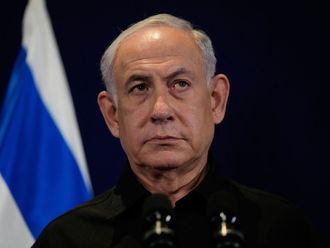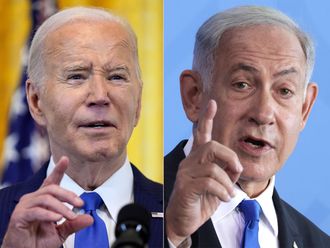
Beirut: Syrian protests have been mainly peaceful but there have been increasing reports of attacks on security forces.
Upheaval in Syria would affect its allies and enemies in the volatile Middle East, and a softening in rhetoric from Arab countries last week indicated they might still be prepared to support President Bashar Al Assad if he implements reform.
The following are some possible scenarios in Syria and the risks and opportunities they would present:
Stalemate
The United Nations says 2,200 people have been killed in Al Assad's crackdown on dissent since protests broke out in March. Syria says more than 500 soldiers and police have been killed by armed groups it blames for the violence.
Despite growing international condemnation, Western sanctions, and escalating economic pressures from the unrest, Al Assad's rule shows no sign of imminent collapse.
Nor is there any indication the protests across the country are about to stop, although the number of protesters appears to have fallen since Al Assad sent troops into several major cities earlier in August.
If Al Assad cannot crush the protests completely, he may be able to contain their impact, staying in power despite the major upheaval and econ-omic disruption caused by the unrest and growing international isolation.
Al Assad could reshuffle his ministers and bring in opposition figures in a symbolic move that will not stop street demonstrations but may convince some he is serious about reforms, including the promise of multi-party elections by February.
Read more stories on the unrest in the Middle East
After an apparently coordinated wave of criticism from regional powers including Saudi Arabia, Egypt and Turkey, Arab states have moderated their language in recent days, hinting at a possible easing of pressure on Al Assad.
Many opposition figures have dismissed Al Assad's promise of political reform and say they cannot talk to the authorities while the violence continues. But if the deadlock continues, some members of the opposition may feel there is no alternative to negotiation, despite the chasm of mistrust.
Outside intervention
So far no country has proposed carrying out in Syria the kind of intervention undertaken by Nato forces to help Libyan rebels topple Muammar Gaddafi.
But the collapse of Gaddafi's rule has encouraged some Syrian opposition figures and protesters to support international intervention in Syria.
But any military intervention could destabilise a region in which Al Assad enjoys strong support from Iran and backs militant groups like Hezbollah, Hamas and Islamic Jihad.
Analysts and some opposition activists have warned the continuous killing may encourage people to take up arms in big numbers, pushing the country towards civil war. "I fear that some in the opposition who are in a hurry to end the regime, who we have always warned against repeating the Libyan example, will say now it has been successful and resort to arms," said opposition figure Louay Hussain.
Al Assad belongs to the minority Alawite sect which makes up around ten per cent of the Syrian population. Most of the demonstrations are taking place in Sunni Muslim areas.
Military support
Syria suffered repeated coups in the 1960s before Al Assad's father, Hafez Al Assad, seized power in 1970. Despite reports of some low-level defections, and Al Assad's replacement of his defence minister at the height of the military crackdown in August, the army has so far stood behind the president.
But some activists see little prospect of Al Assad being toppled by street demonstrations and see a military coup as the best chance of removing him.











